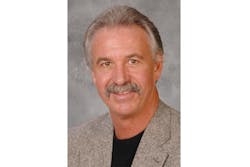In the summer of 2010, State Farm announced a new scoring tool to identify high-performing shops in its direct repair program, Select Service.
With the tool, each shop receives a monthly score of zero to 1,000 based on quality, efficiency and the cost of their work. They are compared with local and national shops in the Select Service program.
Two years later, some shops are frustrated because they don’t know what they have to do to improve their scores, and some don’t understand how the program works. To answer questions and clear up confusion around this program, State Farm recently started a business-to-business website for Select Service members, at which shops can watch videos and get other information about the program.
“We are working toward continuous improvement,” says George Avery, auto claims consultant in property and casualty at State Farm Mutual Automobile Insurance Company. Avery spoke with FenderBender about the Select Service
program and State Farm’s efforts to work with high-performing shops.
Could you tell us about the Select Service program—what it is and what it is intended to do?
We launched Select Service in 2005, but before that, in the 1990s, we created Service First. And Service First was really a relationship program. We had 20,000 body shops on that program. Then, as a result of movement in the industry and our need to better manage our programs, we came up with Select Service. The difference is, Service First was more of a relationship program, and Select Service is more of a performance program.
What do you mean when you say “relationship program”?
State Farm is a good neighbor; we like to deal with anybody we can. Customer choice is very important to us. But at the time, the Service First program was written in a way that allowed anybody that did bodywork in the neighborhood that also did good work was on our Service First program. It was a way to electronically communicate with as many repair facilities as we could. But we found it was very difficult to communicate effectively with 20,000 repair facilities.
So what we did was we reduced the size, and we did that through the Select Service program. What we did when we developed it was we asked our local management to identify the highest performers in their market area. They knew who they were based on the information and data they had. Local management was required to identify the highest performers in the neighborhood, based on what our capacity needs were. They made those choices, and we reduced our program from 20,000 to 10,300.
How did that benefit your company?
Well, it did a couple things. It helped us better communicate with the repair facilities that were on our program because we had fewer of them. It was a lot easier for us to have time for a meaningful conversation with a repairer. We also wrote the agreement in the form of a performance program—meaning that the components of the program are, of course, quality, efficiency (that’s the cycle time piece), and competitive price. Our vision is that Select Service is a performance program that is intended to identify the high performers in the market. We believe that the highest performers are the ones that provide the best customer service.
Now, that doesn’t mean that just because they’re not on Select that they’re not a high performer or don’t provide excellent customer service. We have capacity needs. Local management determines how many shops in the market we need. We go to those repair facilities that theoretically do most of the work in the market.
—George Avery, auto claims consultant, State Farm
How did you come up with the definition of “high performer”?
Local management did that with the data analysis they had at the local level. With Select Service, the repair facility writes the estimate, and the estimate is sent to us electronically. Then we capture all that data. As a result, as you continue to capture data, you can start to identify who all the high performers are, and what the characteristics are of a high-performing repair facility. Local management makes their decision on what shops they felt did the best work, were the most efficient, and all at a competitive price.
What KPIs are shops typically being scored on?
All of the data, or all the KPIs, come from estimates that Select Service repairers write. So State Farm does not determine the KPIs. A key performance indicator is anything that’s on an estimate that you could use to differentiate one estimate from another. But typically, KPIs are, again, quality, cycle time, parts usage, labor costs, all those types of things. Each one of those things is really determined by the Select Service providers. State Farm does not—and this is an important piece—set the KPIs. We don’t set the goals.
So who does?
The repairers do, through competition. And as the repairers perform their work, you can quickly identify those that are fixing cars correctly, those that are fixing cars the quickest, and those that are fixing cars at a competitive price. Once those repairers set the bar, our program develops competition in the marketplace. The repairers basically compete. It’s self-management.
Can you talk about what specific things shops need to do and know in order to do well in this program?
We have some very talented businessmen and women that may continue to improve a number. Continuous improvement is what we’re looking for. In the Select Service program, we use a scoring model of zero to 1,000. In the report they can see their performance. As far as what they should improve on, as a result of our efforts at the company, there was an interest in repair facilities that want more information for better direction and guidance. We provide them with the top three key performance indicators that have the most effect on their score. So if you had a repair facility that had a score of 800, right in that report dead center, there are three different key performance indicators had the most impact on your score as to what it is right now.
Who are shops competing with and being compared against?
The scores are calculated from all the performance measures on the report so they know what they are. The tool also recognizes the type of repair they’re doing, when they get a heavy hit or a light hit, and compares them to all Select Service repairers company-wide. The local market area also influences the report.
What does that mean? What data are you using?
We don’t disclose what data is being identified, as far as the formula. We keep that confidential. But we tell repairers that your performance, based on the vehicle mix, they are being compared to all of those in the Select Service program. Their score is also influenced by what their competitors are doing in their own market area that are also in the Select Service program.
I understand that the scores of competitors are not revealed. Why is that?
One of the questions I asked repairers is, “Do you want competitors to see your score?” Some say yes, and some say no. But our opinion, and the way we run our program, is that we believe individual scores have the most effect on that facility. Customers benefit from continuous improvement—not just, all I need to do is be better than the guy next door. That really doesn’t benefit the customer. We want continuous improvement in that balance of quality, efficiency and competitive price.
Will shops be kicked off the program if their scores are too low?
No. There’s no minimum score for Select Service. There’s no need for a repairer to be fearful of what they perceive as a low score. Now, management will use their score as one of the components to determine whether we need to discontinue a relationship. But the way we feel is that if a repairer signs the Select Service agreement, then they’re a business partner, and if they feel they have a deficiency or want to have a higher score, then we would like to help them. We can’t do it for them. We will help them in any way we can, providing information or answering questions. But really it’s up to the repairer. They know their business the best. They know how to improve their cycle time and get cars through. They know their personnel. We’ve seen many cases where repairers understand how the scorecard works, and that it’s overall performance. It’s not just hitting one KPI. It’s overall high performance. The repairer is faced with the situation where they’re doing things month after month and their score goes down. Well, it’s possible those around them are getting better.
What concrete steps can shops take toward improving their scores?
Not being a repairer, I don’t know. The repairer knows their business better than anybody. But I would tell a repairer to first have confidence in the tool of Service Select. Second, whenever a car comes into my facility, I would recognize as an owner that I’d be compared to those repairing a similar vehicle, so my recommendation is to look at that car and repair facilities write estimates all day long.
I would also ask myself how my competitors are going to do better on this repair than me. For example, let’s take a regular front-end hit with a bumper, a repairable fender and a headlamp. Do you think your competitors are going to repair it in the same way? Keep in mind, quality, efficiency and competitive price. That is my recommendation on how to improve your score.



